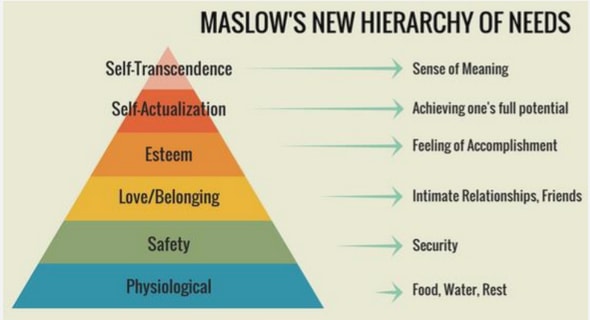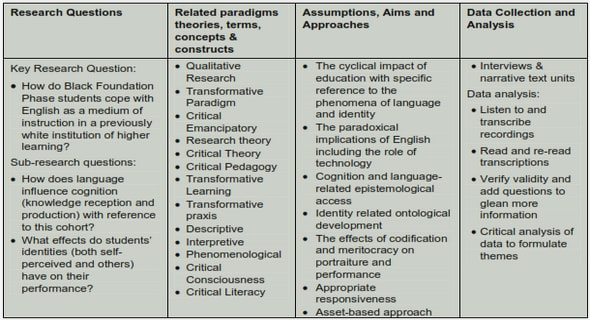Get Complete Project Material File(s) Now! »
CHAPTER 2: BACKGROUND TO RESEARCH PROBLEM
The purpose of this chapter is to investigate whether the research questions have been addressed previously in the literature, in order to refine and/or expand the research variables accordingly. The chapter therefore addresses the main research question, namely:
What factors contribute to Deaf South Africans’ lack of comprehension of signed interpretations of TV news bulletins?
The research problem is viewed in the context of the dynamics of the South African Deaf community, the nature of sign language and research into sign language interpreting.
Introduction
Since this is the first study to address comprehension of South African Sign Language interpreters by Deaf audiences, the researcher was obliged to investigate how Deaf audiences of other countries understood sign language interpreters in general and TV sign language interpreters in particular. Research reported in international literature indicates that Deaf audiences struggle to comprehend interpreters. As early as 1977, when sign language interpreters first began to be used at schools and universities, Jacobs (1977:10-14) showed that Deaf students did not understand their interpreters. This observation was confirmed twenty years later by Jackson et al. (1997:172-184). Both researchers ascribe this lack of comprehension to students’ perceived weak metacognitive and metalinguistic processing skills, as well as to their lack of education, experience and general knowledge. In the following decade, Marschark et al. (2005) ascribed similar observations of student incomprehension to students’ lack of metacognitive skills or inadequate signing skills.
According to Bidoli (2009:134), divided attention between other visual materials and an interpreter also hampers comprehension of the interpreter.The first test of Deaf audiences’ comprehension of TV sign language interpreters was undertaken by Woll (1991), who found that British Deaf viewers experienced difficulty in understanding British Sign Language (BSL) interpreters on TV and wanted subtitles or Deaf signers instead. Poor comprehension was confirmed by Steiner (1998) for both BSL and signed-English user groups. More recently, Kyle’s (2007) extensive investigation of six surveys in the UK conducted between 1992 and 2005 revealed that Deaf viewers do not like or comprehend hearing TV interpreters and want original signed programmes instead. Similarly, Xiao and Yu (2009:155), testing comprehension of Chinese Sign Language on (mainland) Chinese TV as part of a larger survey, find that viewers are dissatisfied with the interpreters.Cokely (1992) and Bidoli (2009:134) ascribe lack of comprehension to interpreter “errors” and lack of professionalism. However, the respondents interviewed by Kyle (2007) in Britain and Xiao and Yu (2009:155) in China expressed dissatisfaction instead with the type of sign language used by the interpreters. According to Kyle (2007), Deaf viewers regarded the interpreters’ sign language as different from their own, regarded interpreters as having poor signing skills and also expressed dissatisfaction with the small size of the interpreter picture. The frustration a Deaf audience experiences when watching sign language interpretation has been succinctly expressed by the Deaf researcher and interpreter, Angela Stratiy (2005:244):
I abhor simultaneous interpretation. Its effect on the deaf consumer, quite honestly, is often much like a deer in the headlights – it knows something is coming at it (at high speed) but is unable to make sense out of what it might be. So often when I am faced with a barrage of information during simultaneous interpreting, I know that there is information there, but in my effort to sort it through, I lose the message.According to Stratiy (2005), the Deaf recipient has to expend great effort in unraveling a message high in information content that is not immediately coherent in structure1. This indicates that audience signing proficiency alone cannot account for lack of comprehension of
an interpreted broadcast and that the interpreter’s professional and linguistic skills (or lack thereof) also appear to be factors leading to incomprehension. Moreover, comparisons of Deaf students’ comprehension of signed language interpreting with other types of communication could not conclusively show superior comprehension of sign language interpreting. Marschark et al. (2004) finds no significant difference in students’ comprehension of a lecture interpreted into American Sign Language (ASL) with one interpreted into signed English (cf. Marschark et al. 2005), indicating that the type of signing is not the main factor hampering comprehension. Similarly, Jackson et al. (1997:172-184)could not conclusively show that Deaf students who watched a signed interpretation understood the lecture better than students who lip-read the presenter. Napier et al. (2006)even find that, despite low literacy levels, Deaf students gain more information from reading online text than from watching a signed presentation. Kyle’s (2007) survey similarly finds that Deaf viewers want subtitles as well as an interpreter on TV broadcasts, despite tested low comprehension of subtitles (cf. Woll 1991). This suggests that Deaf viewers may prefer to obtain information from other sources such as lip-reading or on-screen text rather than watch an interpreter, regardless of signing proficiency. Bidoli’s (2009) observation of the effort required to divide attention between the interpreter and the main picture suggests that Deaf viewers may prefer to simply look at the picture and ignore the interpreter.
PREFACE AND ACKNOWLEDGEMENTS
ABBREVIATIONS
ABSTRACT
KEY TERMS
TABLE OF CONTENTS
LIST OF TABLES
LIST OF FIGURES
CHAPTER 1: INTRODUCTION
1.1 Context of research problem
1.1.1 A service to a particular target audience
1.1.2 Communication of a message
1.1.3 A professional setting
1.1.4 The interpreter as a professional
1.2 Research questions and objectives
1.3 Research framework
1.3.1 Research methodology
1.3.2 Research variables
1.3.3 Research procedures
1.4 Contributions of the study
1.5 Scope and limitations of the study
1.6 Ethical considerations
1.7 Organization of the research
CHAPTER 2: BACKGROUND TO RESEARCH PROBLEM
2.1 Introduction
2.2 Target audience communicative factors
2.2.1 A signing community
2.2.2 Signing proficiency
2.2.3 Sign systems
2.2.4 Signed languages in South Africa
2.2.5 Other means of communication
2.3 Physical environment factors
2.4 Sociological variation
2.5 Linguistic characteristics of sign language
2.5.1 Phonology
2.5.2 Morphology
2.5.3 Lexicon
2.5.4 Discourse structure
2.5.5 Syntactic structure
2.6 Interpreting quality
2.6.1 Norms: what simultaneous interpreters should do
2.6.2 Strategies: what interpreters think they are doing
2.6.2 Shifts: what interpreters are doing
2.6.3 Errors: what simultaneous interpreters do but shouldn’t
2.7 Conclusion
CHAPTER 3: SIGN LANGUAGE CORPUS STUDIES
3.1 Introduction
3.2 Basic concepts
3.3 Design criteria
3.4 Techniques used to analyse corpora
3.5 Application of corpora to translation and interpreting
3.6 Challenges of corpus research
3.7 Sign language corpora
3.7.1 Multilingual and bilingual corpora
3.7.2 Monolingual European corpora
3.7.3 Monolingual BANZSL corpora
3.7.4 Other monolingual corpora
3.8 Metadata
3.9 Sign language transcription
3.9.1 Notation systems
3.9.2 Glosses
3.9.3 ID-glosses
3.10 Annotation of sign language corpora
3.10.1 Phonological annotations
3.10.2 Annotations for partially lexicalised items
3.10.3 Annotations for non-manual features
3.10.4 Annotations for iconicity
3.10.5 Annotation of discourse markers
3.11 Conclusion
CHAPTER 4: RESEARCH DESIGN AND METHODOLOGY
4.1 Introduction
4.2 Review of research questions
4.3 Interpreting Studies
4.4 Grounded Theory
4.4.1 An emergent approach
4.4.2 An iterative approach
4.4.3 A mixed method approach
4.4.4 Triangulation
4.5 A reception-oriented approach
4.5.1 The notion of a tertium comparationis
4.5.2 The notion of norms
4.5.3 The notion of shifts
4.5.4 Development of a reception-oriented model
4.6 The tertium comparationis
4.7 Research procedures
4.7.1 Questionnaire design and analysis
4.7.2 Eye-tracking design and analysis
4.7.3 SASL discussion
4.7.4 Corpus design and analysis
4.8 Reliability and validity
4.9 Conclusion
CHAPTER 5: TARGET AUDIENCE EXPECTATIONS
5.1 Introduction
5.2 Pilot study
5.3 Questionnaire results
5.3.1 Sociological profile
5.3.2 Means of communication
5.3.3 General viewing preferences
5.3.4 Assessments of news bulletins
5.3.5 Questionnaire summary
5.4 Results of eye-tracking experiment
5.4.1 Differences between Deaf and hearing viewing patterns
5.4.2 Channel comparisons
5.4.3 Scene comparisons
5.4.4 Eye-tracking summary
5.5 SASL discussion results
5.5.1 Language issues
5.5.2 Understanding interpreters
5.5.3 Deaf culture
5.5.4 Subtitles
5.5.5 Picture size
5.5.6 Deaf interpreters
5.5.6 Discussion summary
5.6 Conclusions
5.6.1 Means of communication
5.6.2 Physical environment factors
5.6.3 Language variation
5.6.4 Language use
5.6.5 Interpreting skills
5.6.6 Deaf norms
5.6.7 Summary
CHAPTER 6: CORPUS ANALYSIS
6.1 Introduction
6.2 Manual analysis process
6.3 Sign quality
6.3.1 Physical visibility (u0)
6.3.2 Clarity of articulation (x)
6.3.3 Signing speed
6.3.4 Comparison of interpreters
6.4 Lexical features
6.4.1 Language variation
6.4.2 Iconicity
6.4.3 Polysemy
6.4.4 Fingerspelling
6.5 Discourse devices
6.5.1 Reference
6.5.2 Role-shift
6.5.3 Topic-marking
6.6 Non-manual features
6.6.1 Mouthing
6.6.2 Facial expression
6.6.3 Head and body movements
6.7 Interpreting choices
6.7.1 Substitutions
6.7.2 Additions
6.6.3 Omissions
6.6.4 Interpreting errors
6.6.5 Correlation of errors with shifts
6.7 Conclusion
CHAPTER 7. CONCLUSION
7.1 Research overview
7.2 Summary of findings: the research questions revisited
7.2.1 Research question one: means of communication.
7.2.2 Research question two: physical environment factors
7.2.2 Research question three: language variation
7.2.3 Research question four: language use
7.2.4 Research question five: interpreter choices `
7.2.6 Main research question
7.3 Guidelines for sign language interpreting
7.3.1 Target audience communicative needs
7.3.2 Recommendations for interpreters
7.4 Contributions of the research
7.4.1 Theoretical contributions
7.4.2 Practical applications
7.5 Validity and reliability of results
7.5.1 Triangulation of research procedures
7.5.2 Validity and reliability of respondent sample results
7.5.3 Validity and reliability of participant sample results
7.5.4 Validity and reliability of the corpus results
7.6 Limitations of the study
7.7 Recommendations for future research
7.8 Conclusion
LIST OF SOURCES
GET THE COMPLETE PROJECT
A CRITICAL INVESTIGATION OF DEAF COMPREHENSION OF SIGNED TV NEWS INTERPRETATION


